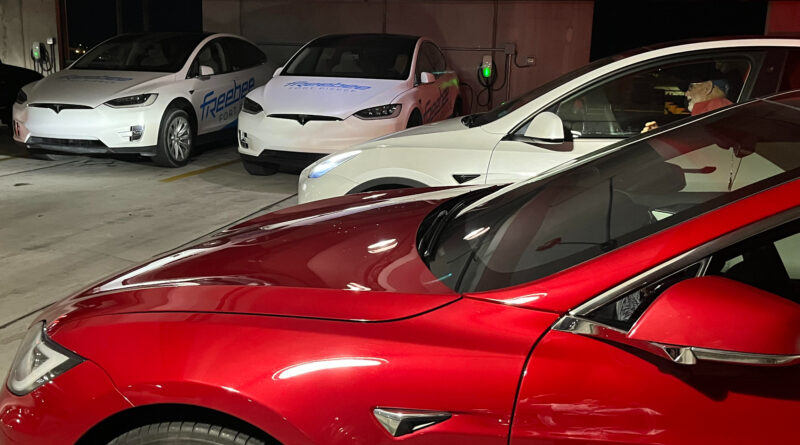Over 2.7 Million Electric Vehicles Operating In US (Report)
In 2022, there were about 1.7 million electric vehicles operating in the United States. According to a new Experian report, that number has increased to just over 2.7 million. Critics might try to push back saying the over 2.7 million EVs figure includes plug-in hybrids — it doesn’t. If we go back ten years to 2013, there were only about 96,000 EVs sold that year in America. Annual sales have been increasing steadily since adding up to an impressive total not many may understand or appreciate.
Despite all the incorrect misinformation and disinformation posted on social media and some news websites about electric vehicles, and a pandemic that threw the global economy into disarray, including peak inflation, they have continued to emerge and expand. They are also poised for further growth.
Experian just released a new report digging into the EV growth trends. Kirsten Von Busch, Experian’s Director of Product Marketing for Automotive, shared some insights with CleanTechnica.
There are over 2.7 million electric vehicles operating now in the US — how did you arrive at that total? Does that figure include electric two-wheel and three-wheel EVs?
The report analyzes cars, light duty trucks, and full electric vehicles. It does not focus on plug-in hybrid (PHEV) or hybrids.
There were over 840,000 new retail EV registrations in the US in the last 12 months. Does that mean non-commercial and non-public transit?
The new EV registrations include retail only. It does not include any other types of vehicles, such as fleets, rentals, etc.
About 50% of the new EV registrations in the last 12 months were for cars and crossovers, so do you expect that trend to hold or will there be more SUVs, pickup trucks, and vans too?
While cars and crossovers continue to dominate market share for new EV registrations, it’s worth noting that the volume of SUVs, pickup trucks, and vans has increased. We’re seeing more OEMs enter the EV market, offering wider model availability. This could impact consumer purchasing behavior in the future.
77% of the new EV registrations for the last 12 months were for luxury EVs. What qualifies as a luxury EV?
A luxury EV has various price points and offers additional technological features that other vehicles may not have. These features can spark a consumer’s interest when looking at different models that are available. Examples include Tesla, BMW, Rivian, Mercedes-Benz, and Audi. Much of the luxury EVs market share can be attributed to Tesla, who led the luxury EV new vehicle registrations at 81.61% in Q2 2023.
Most of the recent new EV registrations in the last year were for Teslas. Why is that, and do you expect that trend to continue?
Much of Tesla’s market share can be attributed to model availability. The range of models and vehicle segments they offer has appealed to the EV buyer, however we’re seeing more OEMs enter the EV market, offering a wider availability of models. With additional options for consumers to choose from, we could expect market share to shift over the coming years.
For the last 12 months the US non-luxury EV registration leaders were the Chevy Bolt EUV, the VW ID.4 and the Ford Mach-e. Why is that?
The increase in market share for these vehicles is a reflection of consumer interest in additional model types. The Chevrolet Bolt EUV and Volkswagen ID.4 are considered to be CUVs and the Ford Mustang Mach-e brings in a different buyer, as well.
According to the report, 85% of EV owners also have a gas-powered vehicle — why is that? Do you expect those owners will eventually replace their gas vehicles with another EV?
With the EV infrastructure still being developed, it’s possible some EV owners are comfortable also having a gas-powered option. Charging stations are not widely available across the country, and multi-residence locations may not be equipped for various charging stations. Additionally, few households have more than one charging port, so having a gas-powered vehicle for extended road trips or when their EV battery isn’t fully charged may appeal to some consumers.
However, as the infrastructure fully develops and EV features, such as range and charging time evolve, we may see consumers become more reliant on alternative-fuel vehicles.
What do you see as some of the key EV adoption barriers?
Perhaps the most significant barrier to EV adoption is infrastructure. Charging stations are not widely available across the country, and few households have more than one charging port; battery range could be a challenge for some consumers that drive far distances. In addition, in some states, EV batteries may not be able to withstand extreme weather.
Have a tip for CleanTechnica? Want to advertise? Want to suggest a guest for our CleanTech Talk podcast? Contact us here.
Latest CleanTechnica.TV Video

CleanTechnica uses affiliate links. See our policy here.

